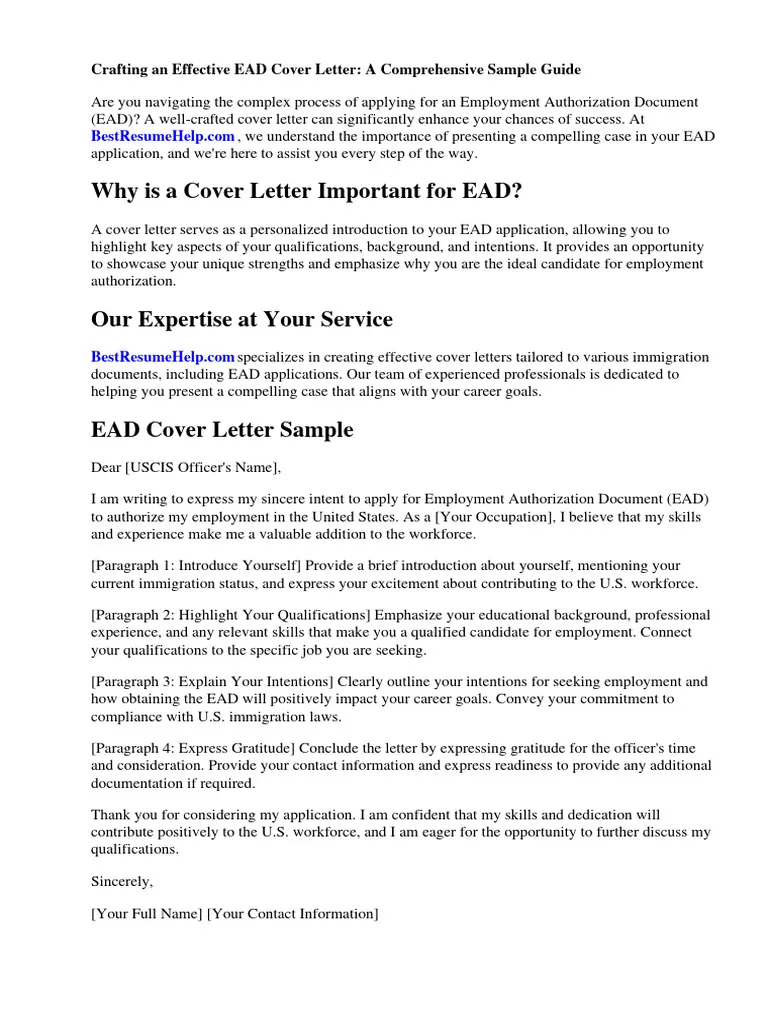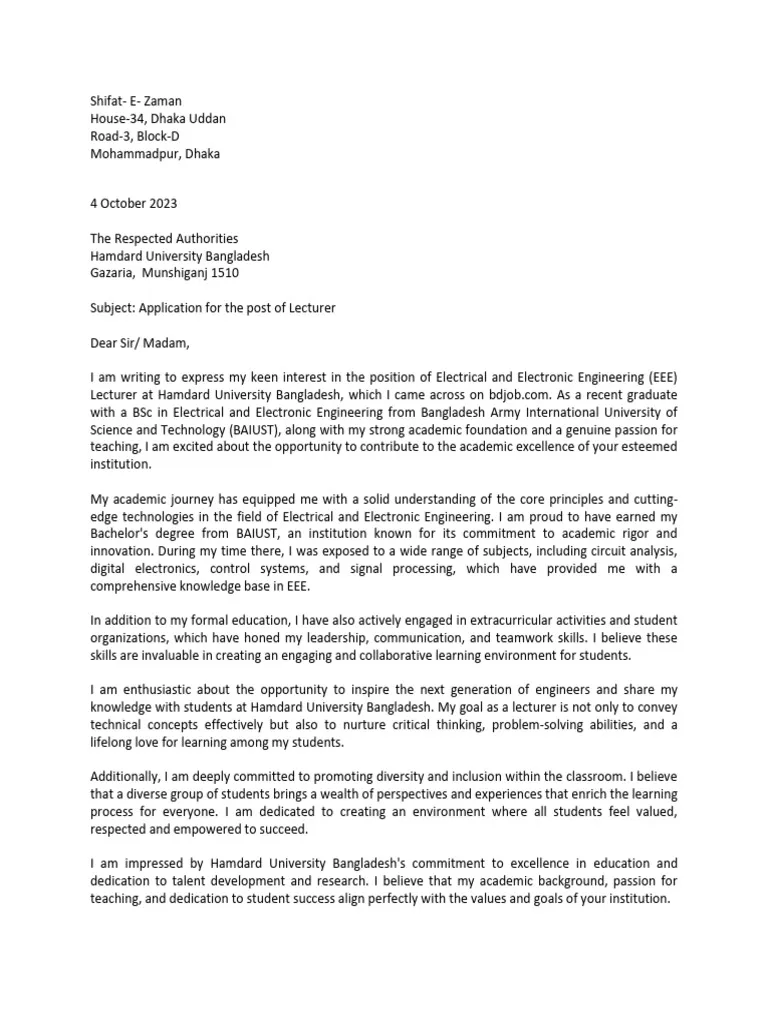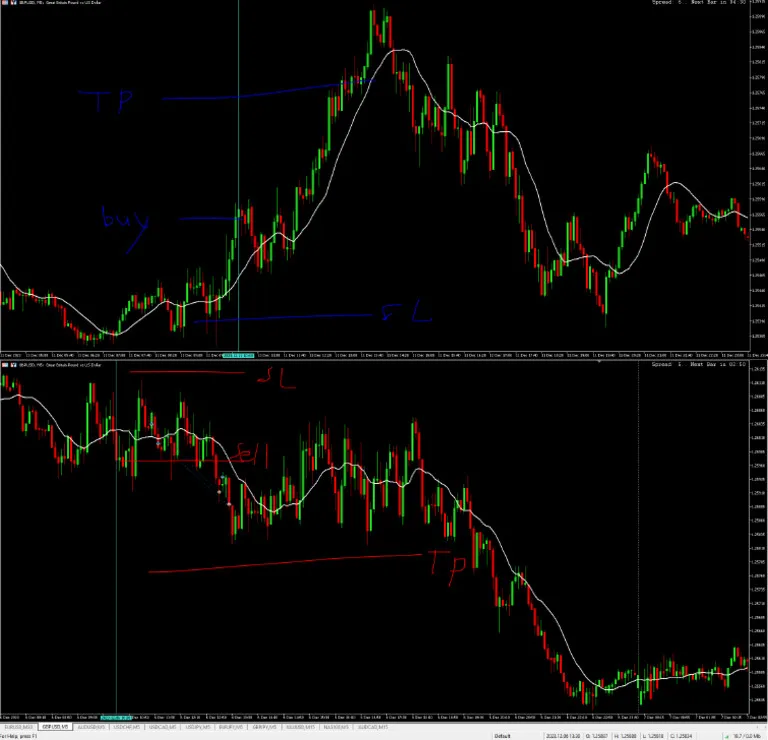What is an EA Cover Letter
An EA cover letter is a crucial document that accompanies your resume when applying for an Executive Assistant position. It serves as your first introduction to a potential employer, providing an opportunity to showcase your skills, experience, and personality. Unlike a resume, which provides a factual overview of your career, a cover letter allows you to tell a story, explaining why you are the perfect fit for the specific role and the organization. It’s your chance to demonstrate your understanding of the company’s needs and your ability to meet them, setting the stage for a successful application. Think of it as your personal marketing pitch, designed to grab the reader’s attention and convince them to delve deeper into your qualifications.
Why is an EA Cover Letter Important
In the competitive world of executive assistant roles, a well-crafted cover letter can significantly boost your chances of landing an interview. It’s an opportunity to differentiate yourself from other candidates by highlighting your unique value proposition. Recruiters and hiring managers often use cover letters to assess your communication skills, attention to detail, and enthusiasm for the position. A strong cover letter demonstrates your genuine interest in the role and the company, going beyond simply listing your qualifications. It shows that you have taken the time to research the organization and understand its needs, making you a more compelling candidate and helping you stand out from the crowd. Failing to include a cover letter can sometimes be seen as a lack of interest.
EA Cover Letter How-To Tip 1 Highlight Your Skills

The most effective EA cover letters focus on skills. When you’re writing your cover letter, carefully review the job description and identify the key skills the employer is seeking. Then, provide specific examples of how you have demonstrated these skills in previous roles. Highlight skills such as excellent communication, organization, time management, and proficiency in relevant software and technologies. Do not simply list your skills; provide context by describing situations where you successfully utilized them. For example, instead of saying ‘Managed schedules’, you might write ‘Successfully managed complex schedules for a busy executive, coordinating meetings, travel arrangements, and appointments, ensuring optimal time management.’
EA Cover Letter How-To Tip 2 Showcase Your Experience
Your experience is a significant asset in the EA field, and your cover letter should effectively showcase it. Briefly describe your relevant work history, emphasizing your accomplishments and responsibilities. Provide examples of how you have supported executives, managed projects, and handled sensitive information. Quantify your achievements whenever possible. For instance, instead of saying ‘Improved office efficiency’, you might write ‘Implemented a new filing system that improved office efficiency by 15%’. Tailor your experience to match the requirements of the specific job you are applying for, demonstrating your ability to step into the role and make an immediate impact. Demonstrate how your past experiences align with the current opportunity.
EA Cover Letter How-To Tip 3 Tailor to the Job
A generic cover letter will likely end up in the rejection pile. Customize each cover letter to match the specific job and company you are applying to. Research the organization and understand its values, mission, and culture. In your cover letter, address the hiring manager by name if possible, and explain why you are particularly interested in working for that company. Use keywords from the job description throughout your letter, demonstrating your understanding of the role’s requirements. Show how your skills and experience align with the company’s needs and how you can contribute to its success. A tailored cover letter demonstrates that you have invested time and effort, making a strong impression on the hiring manager.
EA Cover Letter How-To Tip 4 Quantify Achievements

Numbers speak louder than words. Whenever possible, use quantifiable data to demonstrate your achievements. Instead of stating that you improved efficiency, specify the percentage of improvement. Instead of saying you managed multiple projects, state the number of projects you successfully managed concurrently. Quantifying your achievements provides concrete evidence of your capabilities and makes your cover letter more compelling. Use metrics such as cost savings, time saved, increased productivity, or positive feedback from executives or colleagues. This level of detail shows employers the real-world impact you can bring to the role and adds credibility to your claims. Metrics will help your application stand out from the crowd.
EA Cover Letter How-To Tip 5 Proofread
Proofreading is a critical step in the cover letter writing process. Errors in grammar, spelling, or punctuation can undermine your credibility and suggest a lack of attention to detail. Before submitting your cover letter, carefully proofread it multiple times. Consider using a grammar checker and spell checker, but do not rely on them entirely. Read your cover letter out loud to catch any awkward phrasing or errors that you might miss when reading silently. Ask a friend, colleague, or career advisor to review your cover letter for feedback. A polished and error-free cover letter demonstrates your professionalism and commitment to excellence. Make sure that your cover letter reflects the highest standard of your written communication skills.
EA Cover Letter Template Essentials
While each cover letter should be tailored, certain elements are essential for all EA cover letters. Start with a professional heading that includes your contact information and the date. Address the hiring manager by name if possible, or use a professional salutation such as ‘Dear Hiring Manager’. In the opening paragraph, state the position you are applying for and briefly explain why you are interested. Use the body paragraphs to showcase your skills, experience, and achievements, focusing on the requirements of the job. In the closing paragraph, reiterate your interest in the role, express your confidence in your ability to contribute, and thank the hiring manager for their time and consideration. Always proofread your cover letter before sending, and maintain a professional tone throughout.
EA Cover Letter Common Mistakes

Several common mistakes can damage your EA cover letter and hurt your chances. One of the most significant is not tailoring the cover letter to the specific job. Generic cover letters demonstrate a lack of interest and attention to detail. Other common mistakes include grammatical errors, spelling mistakes, and a lack of quantifiable achievements. Avoid using clichés or generic phrases; instead, provide specific examples that highlight your skills and experience. Do not exceed one page in length, and maintain a clear, concise writing style. Do not include negative information about past employers, and always focus on your strengths and how you can benefit the company. Also, make sure to avoid any typos or inconsistencies.
EA Cover Letter Conclusion and Next Steps
A well-crafted EA cover letter is an essential tool in your job search arsenal. By following the tips outlined, you can create a compelling cover letter that showcases your skills, experience, and personality, increasing your chances of landing an interview. Remember to tailor each cover letter to the specific job, highlight your key achievements, and proofread carefully. Once you’ve sent your cover letter, follow up with the hiring manager to express your continued interest and inquire about the status of your application. With a strong cover letter and a proactive approach, you can take the next step towards securing your dream EA position. Good luck, and happy job hunting!
